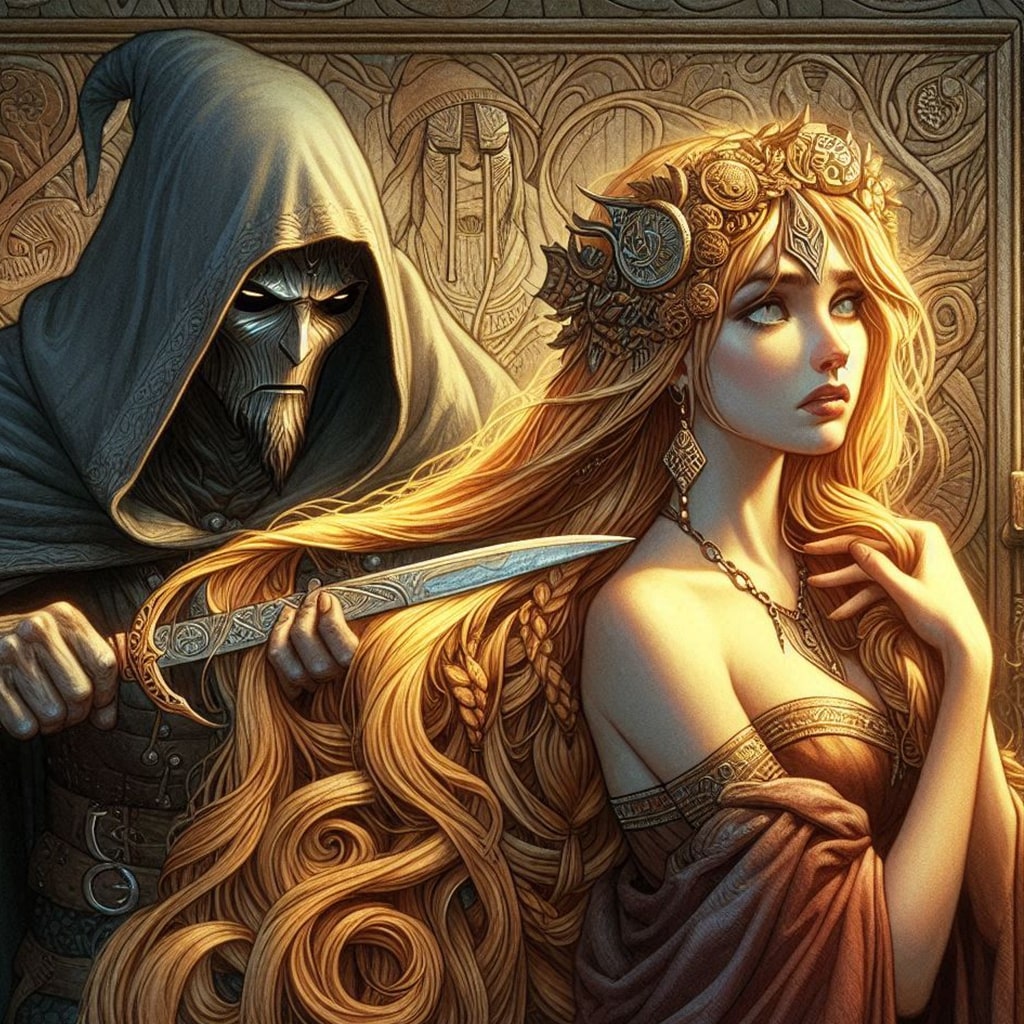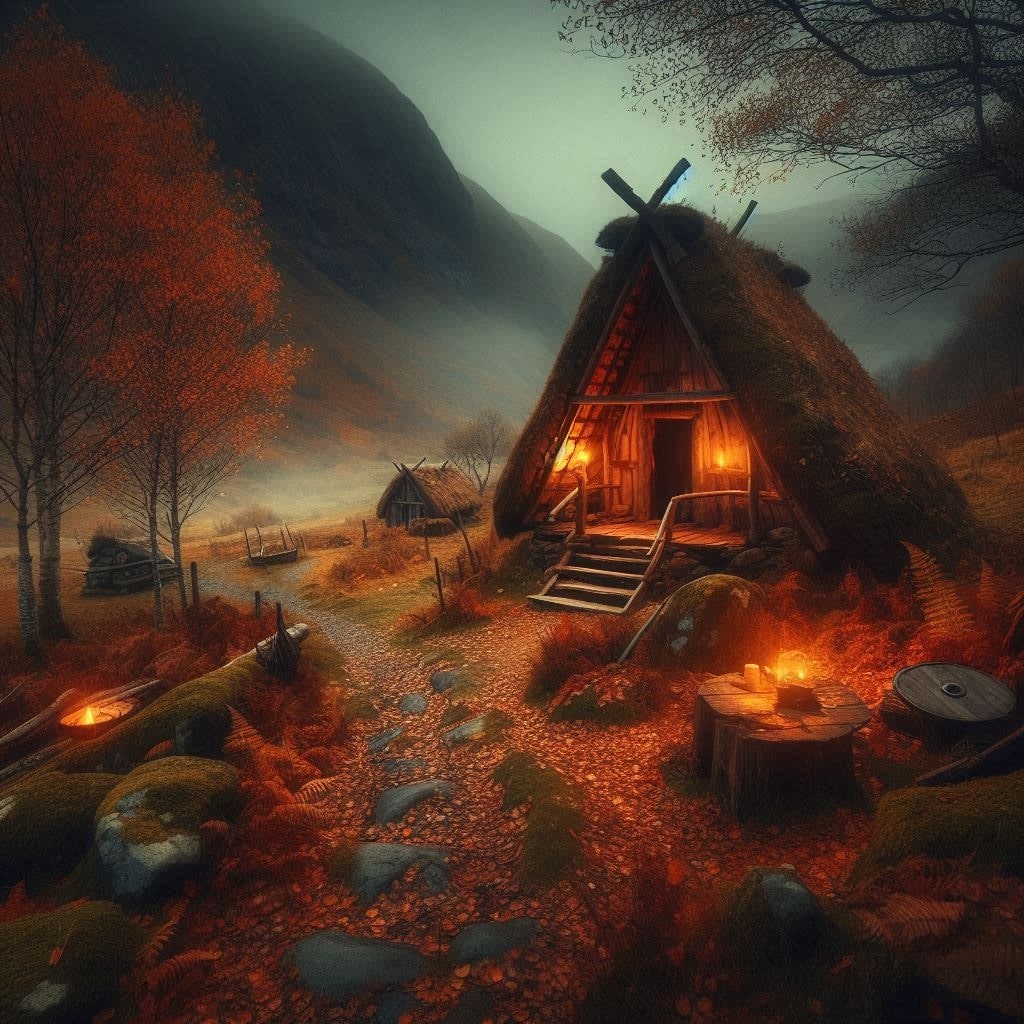Viking Shields: Instruments of Battle, Guardians of Warriors, and Symbols of Honor
When we think of Vikings, images of fearsome warriors aboard longships often come to mind. Among their most iconic equipment was the Viking shield—an essential tool in both battle and daily life. Though often romanticized in popular media, Viking shields were more than mere decorative pieces; they were meticulously crafted, versatile, and integral to the Viking way of life.

The Role of the Viking Shield in Combat
The Viking shield was primarily a defensive weapon, used to block arrows, swords, and other attacks. However, it also played a vital role in Viking offensive tactics. Warriors could use their shields to push back opponents, form protective barriers, or bash enemies to create openings for strikes. In Viking warfare, shields were often linked together to form a "shield wall" (skjaldborg), a formidable defense line used in battle to hold off enemy advances.
Viking shields were typically round, with a diameter ranging from 70 to 100 centimeters (27 to 39 inches). This size offered a balance between protection and mobility, allowing warriors to easily maneuver their shields while still offering ample coverage.
Viking Shield on a Longboat
Shields mounted on the sides of the longboat (also known as drakkar) provided additional protection during raids or battles at sea. They could act as a barrier against arrows, projectiles, or waves, protecting the warriors onboard. When sailing into hostile territory, these shields gave the crew some degree of defense while they prepared to disembark for an attack.
Additionally, hanging shields outside the longboat helped conserve space inside. Viking longships were relatively narrow, designed for speed and easy navigation along coastal waters and rivers. The crew needed room to row, maneuver, and move cargo, so stowing shields along the outer edge of the ship freed up interior space.
Construction and Materials
Viking shields were primarily made of wood, typically lightweight varieties like pine, spruce, or fir. The wood was shaped into a circular board and reinforced with iron or leather to enhance durability. At the center of the shield was a prominent feature: the boss. This rounded metal dome provided extra strength and protected the hand that held the shield.
The front of the shield was often covered with a thin layer of animal hide, which increased its resilience against blows. Leather strips were sometimes wrapped around the rim to prevent the edges from splitting, while others may have been bound with iron bands for additional strength. Despite their robust construction, Viking shields were designed to be lightweight, making them effective for both long battles and quick raids.
Symbolism and Decoration
Beyond their practical uses, Viking shields often served as personal symbols of identity and status. While many shields were plain, some were intricately decorated with patterns, painted designs, or carved symbols. These designs could range from simple geometric patterns to representations of Norse gods, animals, or runes believed to offer protection or strength.
Hanging shields on the longships was also a powerful visual statement. The display of shields along the side made the ship look more imposing and intimidating to potential enemies. Viking raids were as much about psychological warfare as they were about brute force, and a longship lined with shields signaled an approaching threat to villages along the coast. The vibrant colors and decorated shields would strike fear into the hearts of those watching from the shore.
Furthermore, the practice had a symbolic role within Viking culture. Shields represented the warrior's honor, status, and readiness for battle. Whether displayed on a longboat or arranged in a shield wall projected the strength and unity of the war band, showcasing their readiness for combat and their belonging to a particular chieftain or clan.

The Shield in Viking Society
While primarily associated with warfare, the shield also held cultural significance within Viking society. A warrior’s shield represented their honor and bravery in battle, and to lose one’s shield was considered a great disgrace. Similar to ancient Greece and Sparta, abandoning or losing one’s shield in battle was widely viewed as dishonorable across many cultures, as it implied the warrior had fled the battlefield in fear.
In some Viking burials, shields were placed alongside the dead as part of their grave goods, symbolizing their role in life and ensuring the deceased was well-equipped for the afterlife. In Norse mythology, the god Odin himself was often depicted carrying a shield, underscoring its importance in Viking life.
Evolution and Legacy
Over time, Viking shields evolved as warfare tactics and technology advanced. By the later Viking Age, the shields became slightly smaller and more specialized, indicating changes in how battles were fought. Despite these developments, the round, wooden shield remained a constant symbol of Viking warfare and culture.
The legacy of the Viking shield endures today, not just in historical studies but also in modern recreations, museums, and popular culture. From TV shows to Viking reenactments, these shields continue to captivate our imagination, reminding us of the craftsmanship, practicality, and symbolic importance of these historical artifacts.
Viking shields were much more than simple wooden barriers; they were carefully crafted tools that played a vital role in Viking life, warfare, and mythology. Their design reflects the balance between form and function, combining protection with maneuverability, while their decoration speaks to the Vikings’ rich cultural heritage. Today, the Viking shield remains one of the most recognizable symbols of these fierce seafaring warriors, providing a window into their world and the enduring allure of Viking history.


